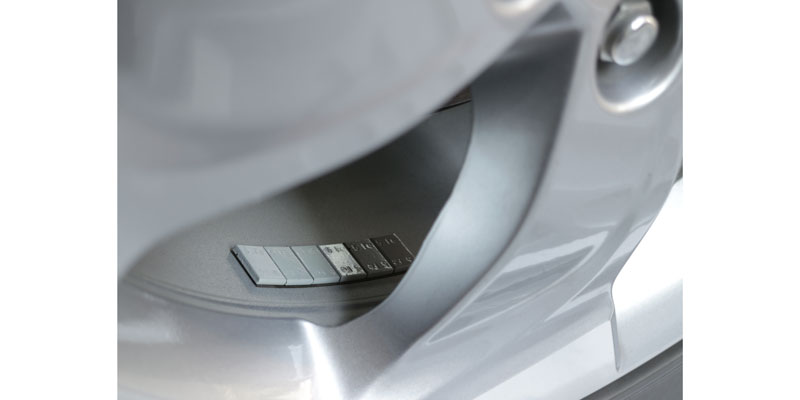
Wheel weights are an important component when adjusting the balance of a customer’s tires. Tire vibration concerns are often the result of an imbalanced tire and wheel assembly. For passenger cars, motorcycles and truck wheels, two options are available: clip-on and adhesive wheel weights.
For the purposes of this article, let’s look at adhesive wheel weights, also referred to as “stick-on” or “tape” wheel weights.
Adhesive wheel weights can be made from lead, zinc, steel or even plastic-coated steel. The materials you decide to go with depend on cost, installer preferences and regulations in your area, since some states prohibit the use of lead-based weights.
For customers making an investment in custom wheels, many don’t like the appearance of a clip-on weight. Adhesive weights placed on the inside of the wheel are less conspicuous, and some products are available in a range of finishes, such as black, silver or chrome, to further blend with the aesthetics of the tire and wheel package. Depending on your equipment, you might be able to identify where to split the weight to place it behind the spokes of the wheel to obscure its presence for an even cleaner look.
Adhesive weights placed on the inside of the wheel are less conspicuous and often are available in finishes that blend in with the aesthetics of the tire and wheel package.
When applying stick-on wheel weights, the first step is to use your wheel balancing equipment to identify the specific location for placement. Some wheel balancers are more advanced than others. Higher tech designs include laser precision for proper placement.
Once the location for the placement of the wheel weight is determined, the next step is to clean the surface of the wheel with alcohol or a similar cleaner to remove any grease or silicone residue at the site to ensure proper adhesion.
Once the placement location is prepared, the next step is to select the correct size of weight, remove the protective backing and take care not to touch the adhesive. Apply the weight to the rim from the middle toward the outside edges with even pressure.
Hold the weight in place for about 20 seconds, or even longer if the wheel is cold. It takes from 24 to 72 hours for the adhesive to fully attach onto the wheel, so it’s recommended your customers avoid “spirited” or aggressive driving for a few days after their wheels are balanced.
Once the weight is in place, re-spin the assembly to ensure the proper balance was achieved.
Editor’s Note: Recommendations are based on information from Bada Wheel Weights, BendPak, Coats Garage, Hunter Engineering, Plombco and Perfect Equipment/Wegmann Automotive.
Check out the rest of the April digital edition of Tire Review here.













